Following a surprise finish in the playoffs in the EFL Championship last season, Sunderland had hoped that the club could push on and continue to challenge for promotion. Whilst the campaign started bright, it soon became inconsistent.
Nonetheless, despite the inconsistencies, the dismissal of Tony Mowbray was still considered a shock and a vastly unpopular decision amongst the Black Cats supporters. Mowbray’s successor, Michael Beale, was met with a lukewarm response from the fans, particularly given his less-than-successful tenure at Rangers.
Rumoured disputes behind the scenes, coupled with five defeats in 11 league games, sealed Beale’s fate recently. Steven Gerrard’s former assistant lasted just 63 days in the position. Sunderland are, therefore, on the lookout for a new manager. Moreover, given the questionable decisions in the boardroom this campaign, there is heightened pressure that the next appointment is the right one.
In this data and tactical analysis, we will assess the current situation at Sunderland regarding style of play and personnel. We will further look at the direction the North East outfit wishes to go in in order to assess which candidates would be more suited to the current vacant manager’s seat at the Stadium of Light. We will provide an analysis of some potential candidates’ tactics and past performances in the dugout.
The current picture and the vision ahead
At the time of writing, Sunderland currently lie in 10th place in England’s second tier, nine points adrift of the playoffs. While it’s not an impossibility that the Black Cats could still finish in the playoffs, it looks like a tall order. For instance, Sunderland finished 6th last season with 69 points, therefore averaging 1.5 points per match.
In contrast, Hull City, who currently occupy 6th place, are averaging 1.6 points per match. The Tigers are projected to finish the campaign on 73 points—four more than Sunderland managed last campaign. This highlights how the Championship is a bit more competitive this season, making the fight for the Premier League even harder.
There is no doubt how tough it is to escape the Championship, but in fairness to Sunderland, there are many positives to take from their current squad. Typically setting up in a 4-2-3-1 or 4-1-4-1 formation, the Black Cats have a solid defensive line with the fifth-best defence in the division.
Centre-back pairing Dan Ballard and Luke O’Nien both rank above the average for the percentage of defensive duels won compared to others in the same position in the league. Sunderland hasn’t kept a particularly deep defensive line this season, but they do tend to operate a mid-block. From here, they have a relatively successful press, with a PPDA ranking in the top half of the league.
In terms of Sunderland’s attacking outlet, they are varied in their approach as they rank fourth in the division for build-up attacks and joint third for direct attacks. Key figures in their attacking play come on the wing, in Jack Clarke and Patrick Roberts.
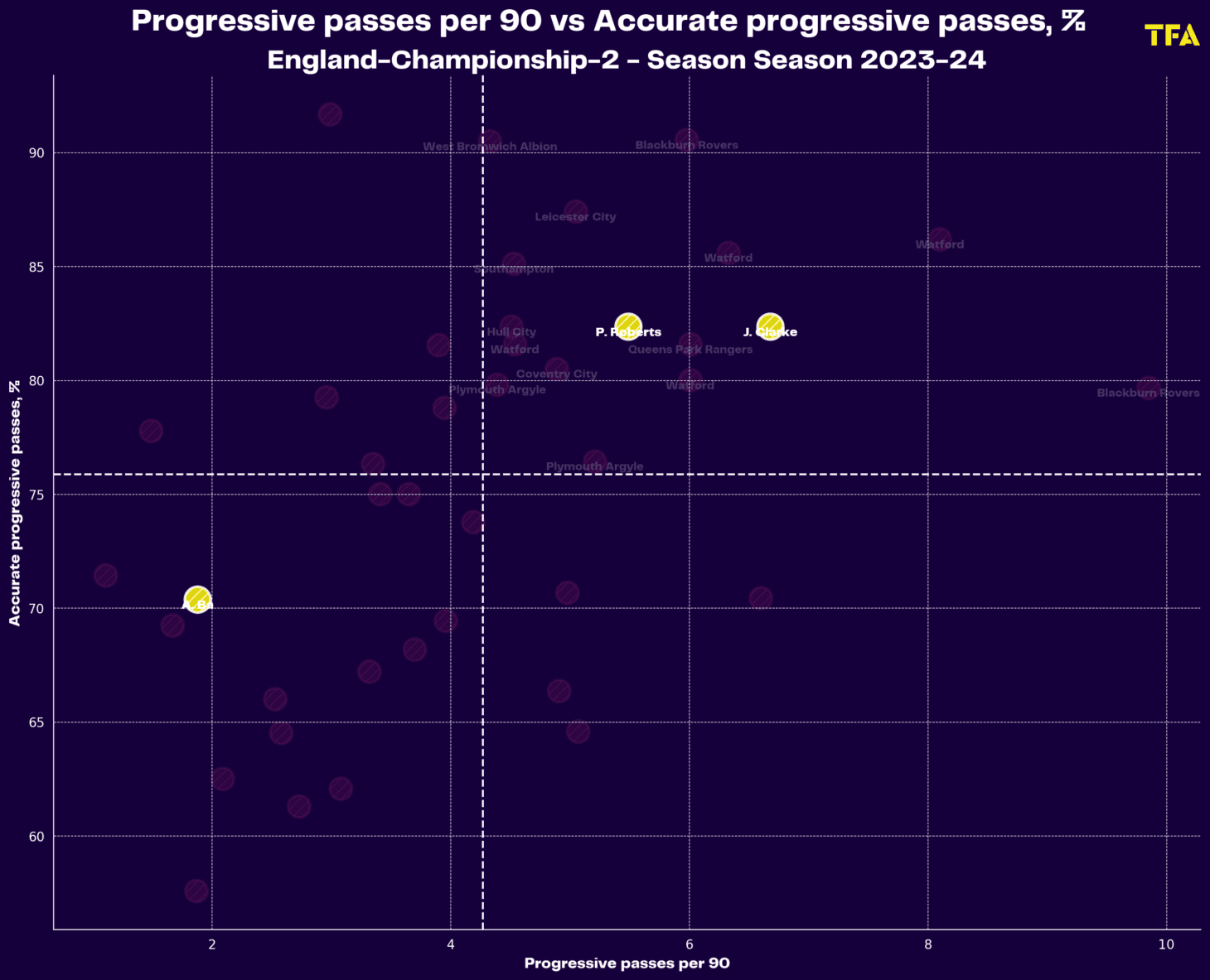
The graph shows that Clarke and Roberts rank above the league average for their progressive passing per 90 and the percentage of accurate progressive passes. This highlights their importance in Sunderland’s ability to break down opposition defences.
Moreover, both players rank above the league average for expected assists per 90 as well as smart passes per 90, demonstrating their strong playmaking influence. Sunderland have come to be particularly reliant on Clarke, who has scored 33% of the North East side’s total goals this season.
Even though the Black Cats are strong on the wings going forward, they struggle to create openings in the more central areas.
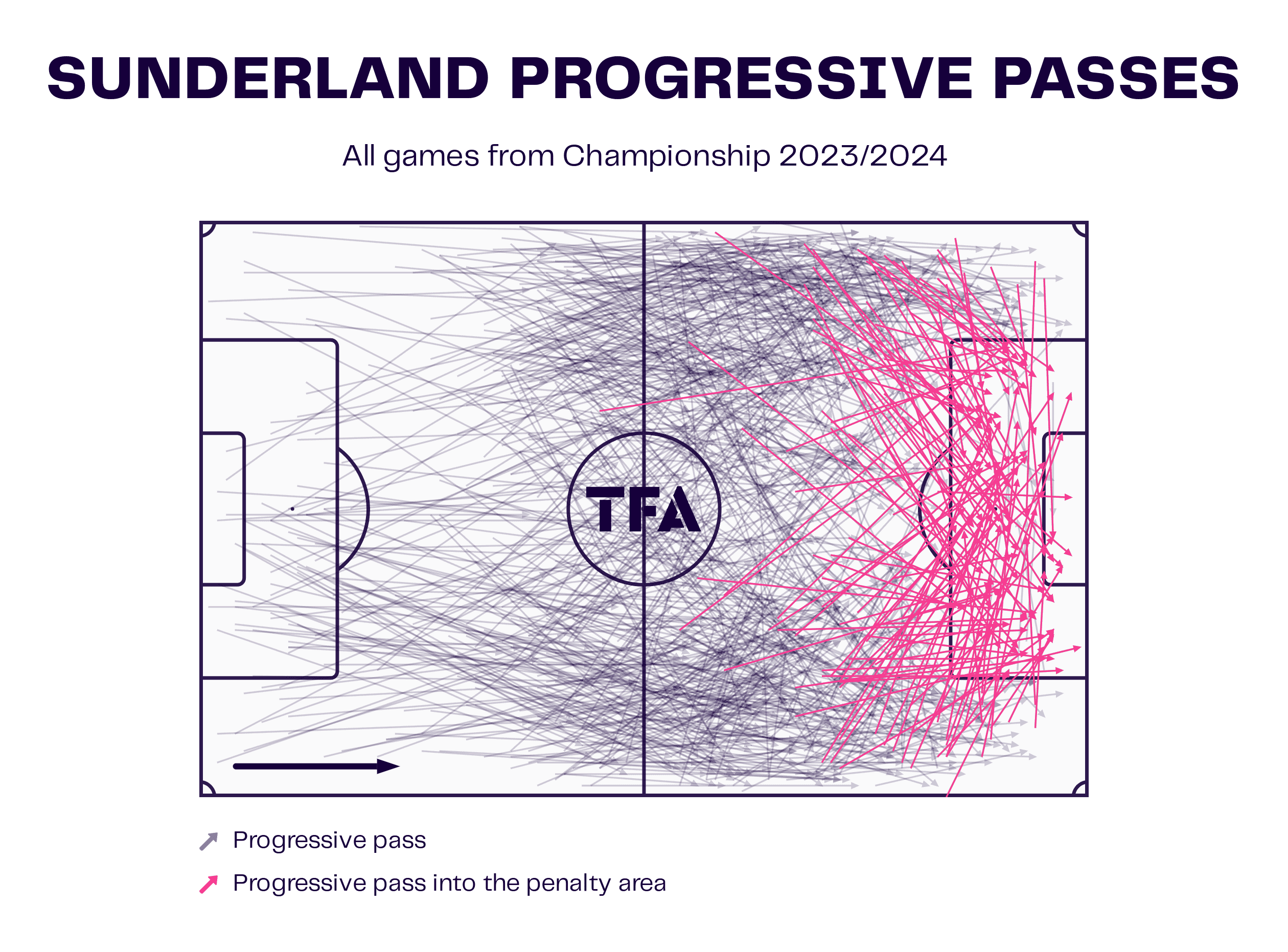
The graphic shows that most of Sunderland’s progressive play comes in the wide areas, and openings in the penalty box are generally a product of passing from the channels. There is room for improvement in Sunderland’s forward line as they tend to lack a clinical touch—only Sheffield Wednesday and Stoke have a worse goal-per-shot conversion.
Sunderland have failed to replace the goals that Ross Stewart and Ellis Simms brought since their respective departures. It has been reported that the lack of bringing in a centre forward during the recent January transfer window was the cause of friction between Beale and the Sunderland hierarchy.
The recent transfer window was not a hive of activity for many clubs, though, considering financial fair play constraints. The likelihood is, though, that any new appointment will likely have larger funds at their disposal in the summer. This brings us to the vision the Sunderland board has for the future.
At present, Mike Dodds is the interim boss, and he may well be given the opportunity to see out the rest of the campaign in charge. This facilitates time for the next appointment and also an audition for Dodds. Not many Black Cats supporters will realistically expect promotion this season, but it would still be considered an achievement at this stage if they could gatecrash the playoffs.
The Sunderland board have expressed a strategy of playing and purchasing young players, exemplified by the fact the North East side has the youngest average-aged squad in the Championship, at 23.4 years. Moreover, their refusal to offer 30-year-old Alex Pritchard a long-term deal speaks volumes. It’s, therefore, imperative that any new manager will need to have a proven track record of coaching younger players.
This was considered the main criterion of which Beale was appointed. However, a look at his past form would have shown that he was not the right candidate. Despite a positive start to life in the QPR hot seat, Beale oversaw a dip in form before he jumped ship to Ibrox. This highlights that although there were positives to take from his time at Loftus Road, there was no longevity to judge Beale on.
Furthermore, Beale’s successor at Rangers, Phillipe Clement, has increased the Glasgow-based side’s average points per match by 53%. This shows where Sunderland went wrong in appointing Beale. Placing too much emphasis on his previous record of coaching younger players ensured that they overlooked his previous performance rate.
A more primary consideration upon appointing a new manager will be to look at their previous performances as well as their preferred style of play, as typically, coaches tend not to drastically change their playing style.
Sunderland’s hierarchy has previously stated their desire for the club to adopt a “strong playing identity that…all can be proud of”. In a perfect world, fans want to see their side play passing football on the front foot. The reality, though, is that teams need to find a balance, as being too open can leave teams vulnerable at the back.
However, as previously highlighted, Sunderland has a decent defensive shape at present but are in need of a more clinical touch. There are good foundations to be built on at the Stadium of Light, and it is a case of finding a manager who can add an attacking dimension on Wearside.
Therefore, this analysis has trailed through potential candidates under the age of 50, who have a track record of overseeing generally balanced sides from a defensive and attacking perspective. Moreover, such a balance must have produced positive results. As secondary criteria, previous man management and ability to work with young players have been considered. Our three-man shortlist is compiled below, highlighting why each candidate would be a good fit.
Will Still
In order to assess previous managerial performance, we have focused on shot metrics from both an attacking and defensive viewpoint.
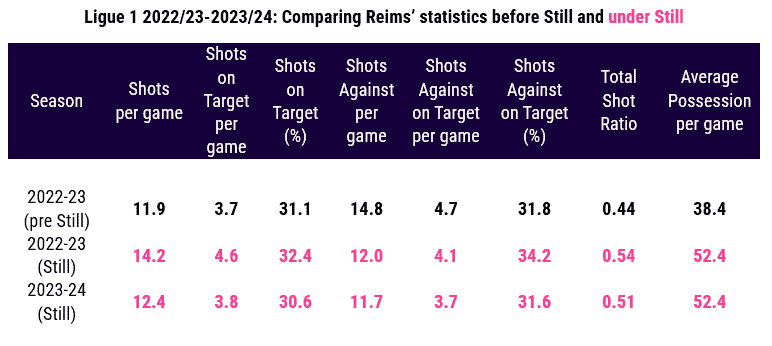
The table shows that when Will Still took over at Reims last season, he improved their attacking outlet—something Sunderland needs. The shots per game particularly increased, suggesting a greater threat going forward. Reims conceded fewer shots following Still’s arrival, suggesting improvements in their defensive shape.
Moreover, the total shot ratio values shown in the table highlight how Reims became more dominant on average during matches with Still at the helm; their possessional dominance increased, although not to levels typically synonymous with possession-heavy sides.
It has been reported that Still had actually been the first choice to replace Mowbray. However, the hierarchy at the Stadium of Light was reluctant to pay the compensation fee for his services.
It is rumoured that Still’s current contract expires in 2025, and with this in mind, there is the possibility that Reims may be willing to negotiate a fee to let Still go this summer. Whilst Still’s Reims are not a side that tends to dominate possession, they have a particular style of play that will appeal to Sunderland.
Reims are slightly more aggressive than Sunderland with their off-the-ball movements, particularly with their counterpressing recoveries. Reims have completed 1.4 more counterpressing recoveries per league match than Sunderland this season. Reims look to intimidate opponents, before launching quick passing exchanges in the final third. In parallel to the Black Cats, Reims’ average direct attacking speed upfield under Still is 1.77m/s, a similar value to Sunderland’s 1.71m/s average.
Reims’ PPDA is also slightly smaller than Sunderland’s, indicating a greater intensity to their play. If Still were to be appointed and to implement such a brand of football, it would undoubtedly generate an atmosphere on Wearside and increase the prospect that the Stadium of Light could become an intimidating place for opponents.
With the likes of Clarke offering pace upfront, there is every chance that Still’s philosophy could work at Sunderland.
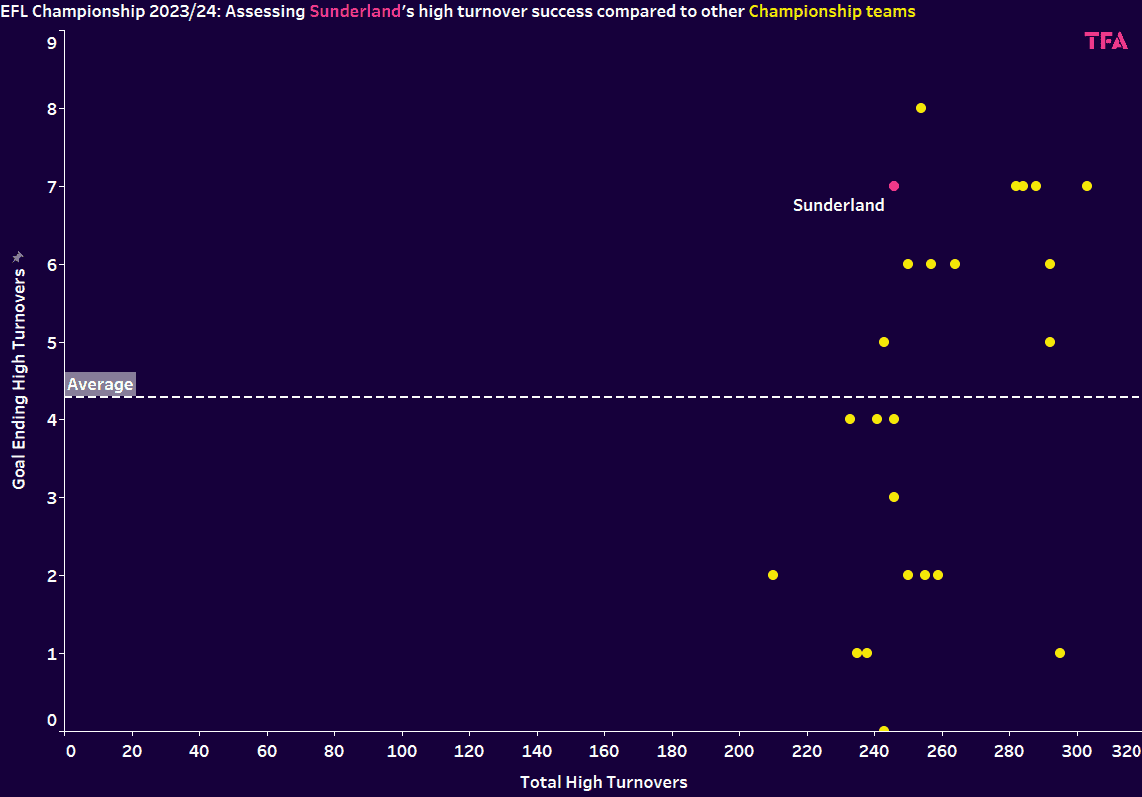
The graph shows that although Sunderland isn’t one of the league leaders in terms of high regains, they are one of the leading sides for goals resulting from high regains. These statistics bode well if Still was to be appointed as it shows that when Sunderland is aggressive with their press, they are effective with it.
Moreover, given Still’s track record of getting the best out of young players—Folarin Balogun being a prime example—the signs point to him being a good fit on Wearside. After the unsuccessful appointment of Beale, Sunderland may need to change their view of a compensation package to acquire Still’s signature.
Fabian Hürzeler
Using the same statistics regarding attacking and defending credentials, our attention was brought to St. Pauli’s manager, Fabian Hürzeler. At only 31 years old, Hürzeler is quickly building a reputation as a highly regarded young head coach.
He was promoted from assistant to manager at St. Pauli last season and oversaw a side that transformed from relegation candidates to promotion prospects.
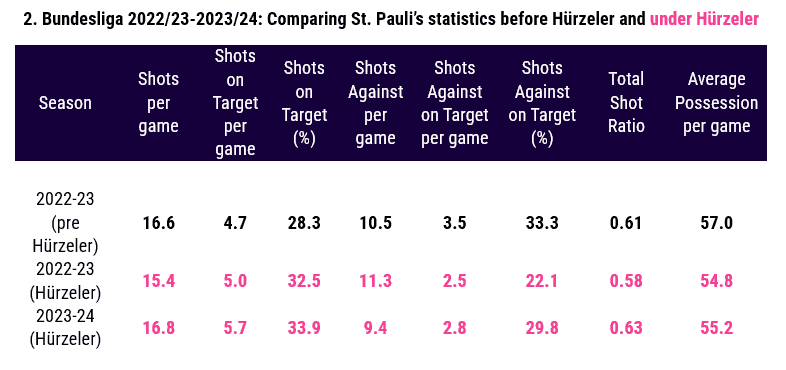
The table shows that drastic improvement from a defensive point of view last season and the solid foundations that Hürzeler has built on this campaign, as his side currently sits top in Germany’s second tier. His side has conceded just 1.04 goals per game this season, the lowest in the division.
Hürzeler’s style is much more possession-oriented than Still’s, looking to dictate the narrative of matches with strong build-up play. It’s a style of play which is reminiscent of Roberto De Zerbi at Brighton, as St.Pauli will look to alter their passing tempo. A change of tempo would suit Sunderland, whose speed can be slow in their build-up play.
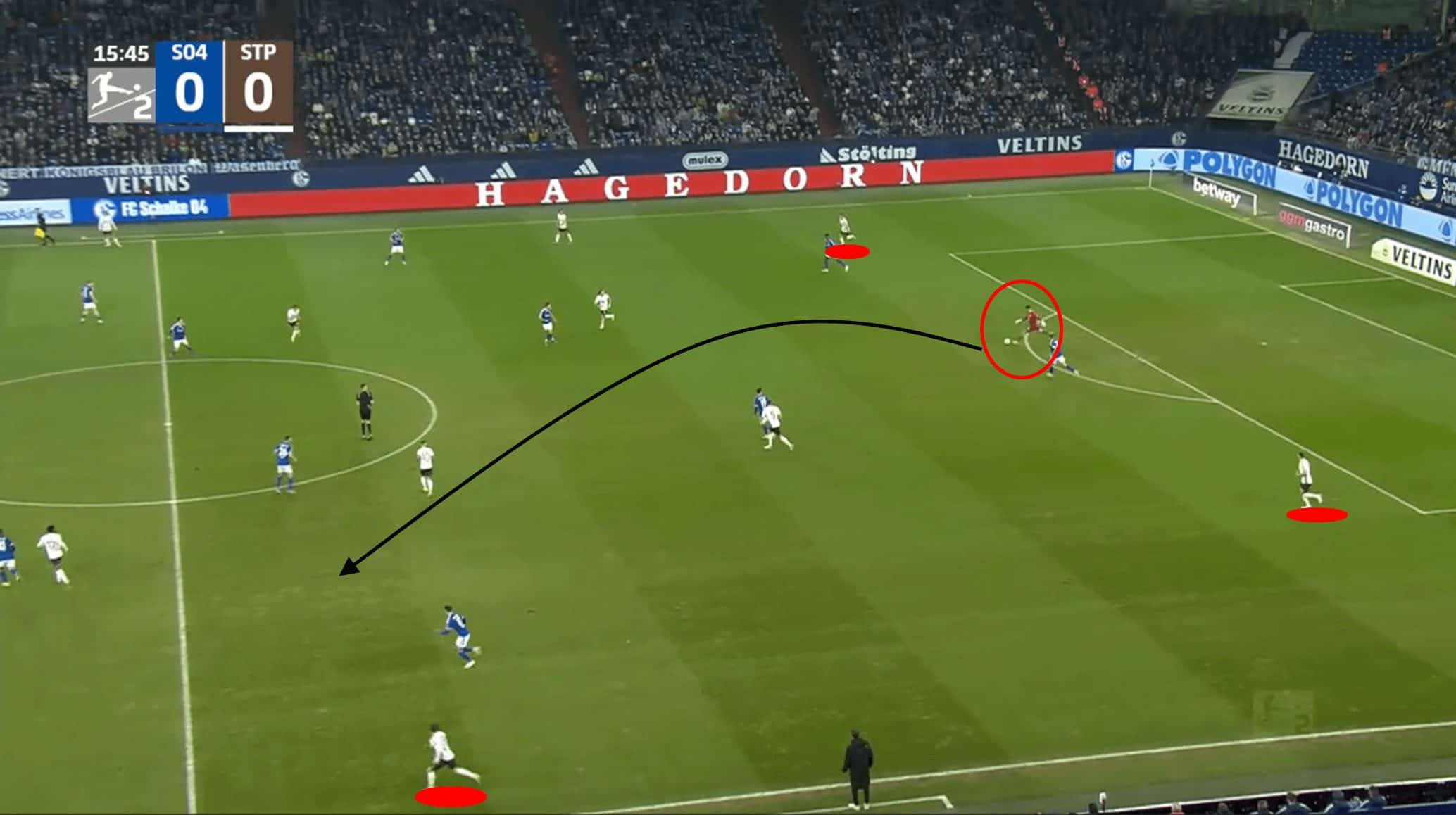
Hürzeler’s side normally sets up in a 3-4-3 formation, but their play is not limited to this shape. As the emphasis is on possession-based football, the goalkeeper will push forward to make a hybrid back three with the two centre-backs, as seen above.
This allows the full-backs to push forward, which is particularly the case with the left-back here, who is attacking the ball distributed by the keeper. As the full-backs tend to advance, St. Pauli is then often able to commit five players in attack, overwhelming the opposition.
Although St.Pauli’s passing exchanges along the backline can be risky, they are a side brimming with confidence and know how to entice the opposition towards a press, only to exploit gaps in the midfield.
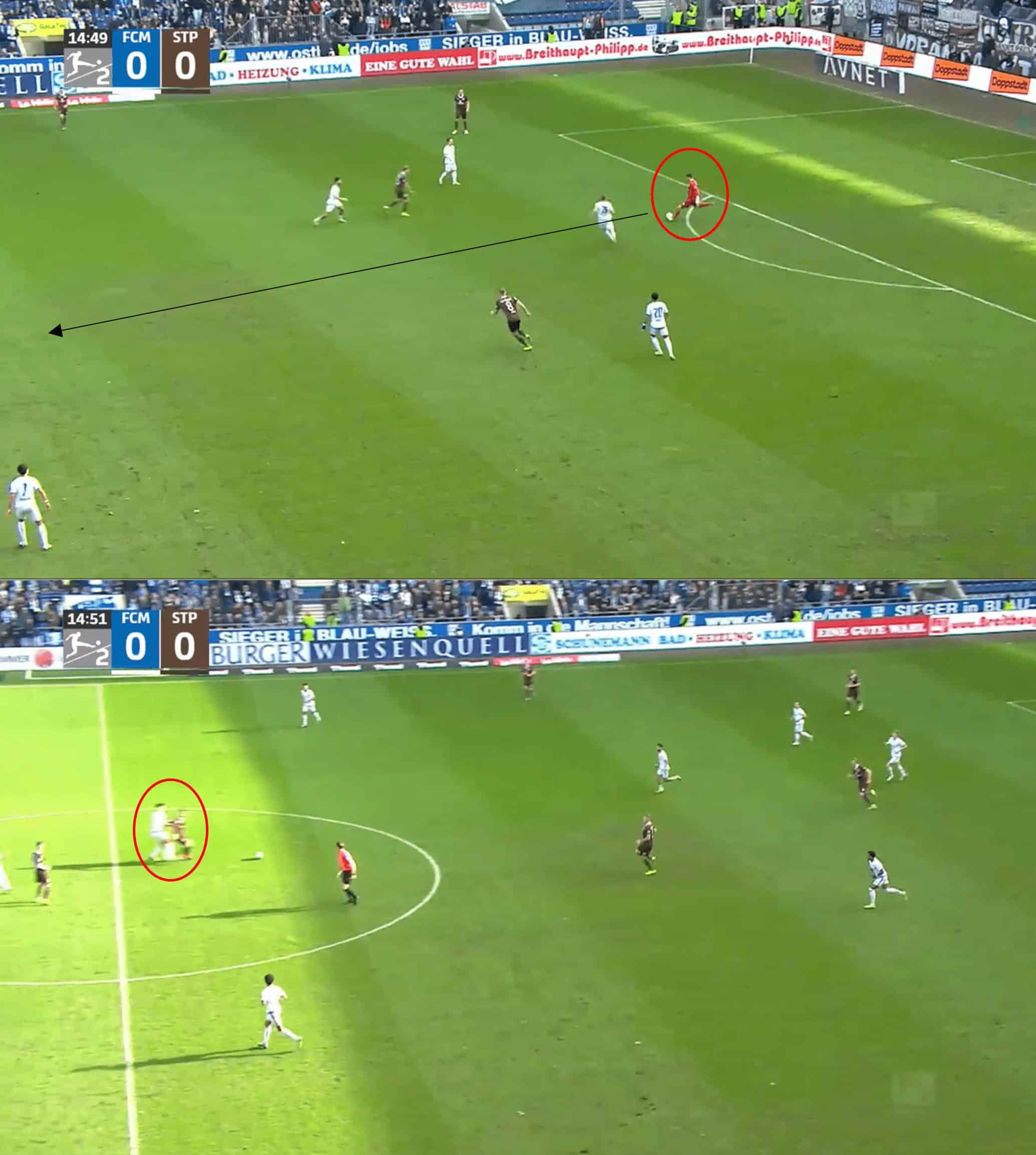
This is exactly the case here, as the opposition’s congested central press has left space for St Pauli to make a single pass not short of the halfway line.
At present, Sunderland is no strangers to possessional play, averaging 56.8%, the fourth highest in the division. They will often look to play out from the back, so there is a basis already set if Hürzeler was to be appointed. It would be a case of whether he can implement his own style in terms of how Sunderland transitions across the pitch.
As well as an expressive brand of football, Hürzeler has experience developing young players, having assistant managed the German national teams at under 18 and under 20 levels. This is another important criterion ticked off.
However, a stumbling block for Sunderland is that if Hürzeler were to win promotion with St. Pauli, he would likely want to test his credentials in the Bundesliga. Moreover, his reputation is only growing at present, and he might, therefore, want to bide his time before jumping ship from the St. Pauli project, especially given his young age. Nonetheless, Hürzeler is certainly an avenue that Sunderland should explore.
Steve Cooper
There were a few candidates for the final spot on this shortlist, with Scott Parker and Steve Cooper considered strong contenders, but we have opted to go with the latter. Although Parker has one more Premier League promotion on his CV than Cooper, the former Nottingham Forest coach’s managerial statistics show a greater level of longevity—an attribute that Sunderland will aspire to have in their manager.
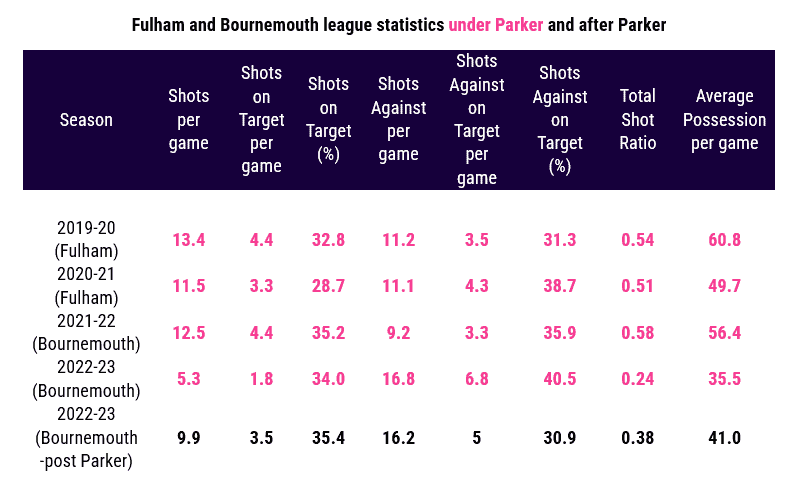
The table shows that once Parker has led sides to the Premier League, he has struggled to keep them there, largely due to his playing style, which leaves his defence exposed. This, in turn, has led to poor defensive statistics for the former midfielder.
Conversely, Cooper has shown strong defensive credentials in all his previous appointments. Particularly at Forest, Cooper set up his side to play on the front foot.
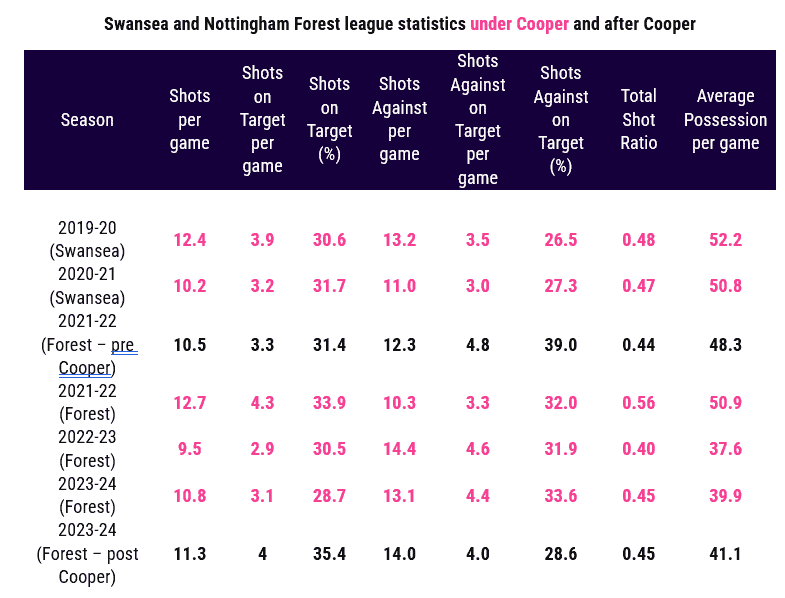
Upon promotion with Forest, Cooper had a difficult task given the turnaround in playing personnel. As well as finding a way to get his new players to gel, he found that sticking to his usual tactical principles in the Premier League was not productive in terms of results.
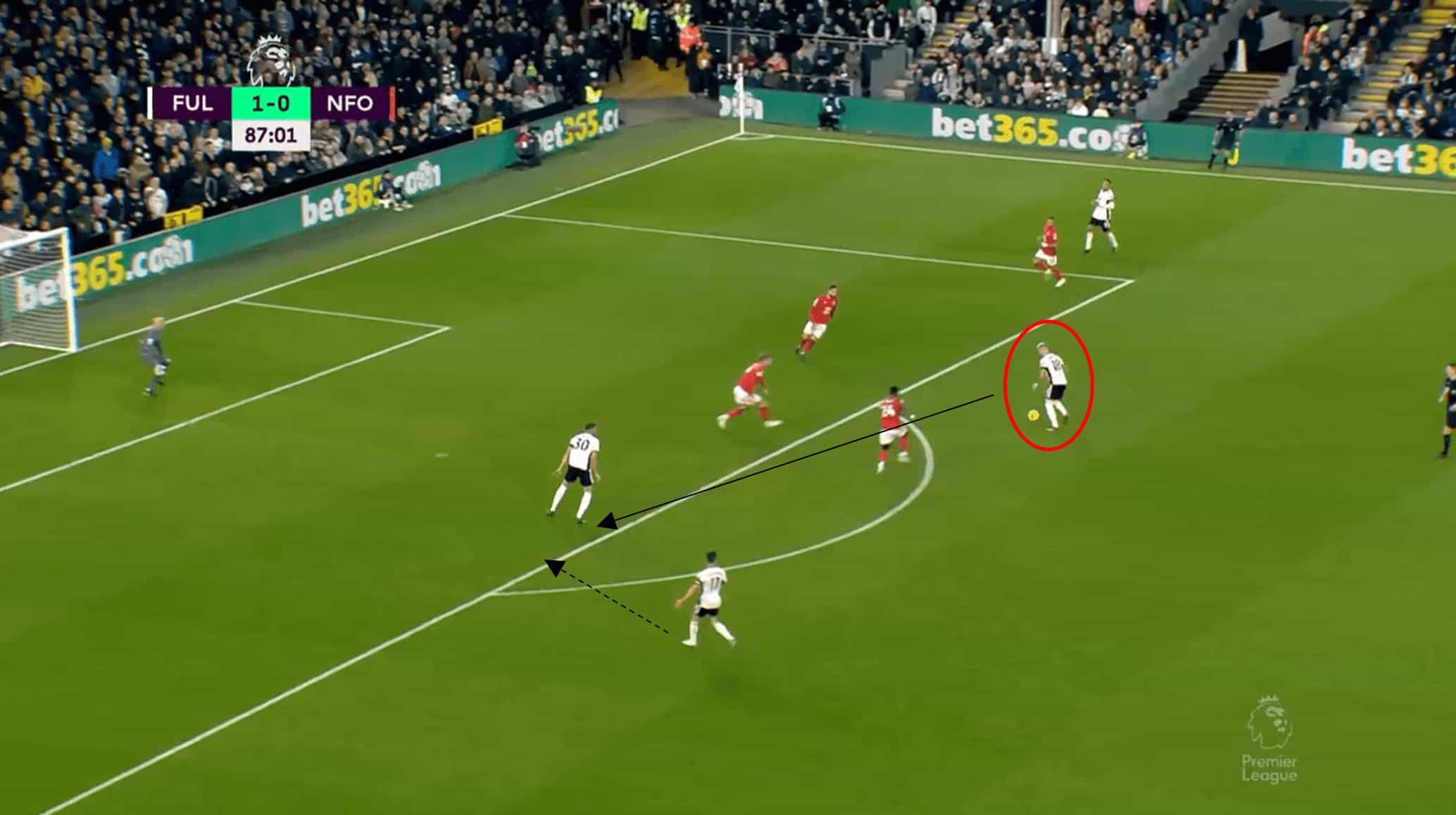
Forest would find themselves vulnerable defensively, such as above, where Fulham has acres of space on the left. The attack does eventually lead to the Cottagers doubling their lead.
However, Cooper adapted his tactics to ensure Forest’s survival last season. Forest became more compact with their shape and engaged in higher presses less often but would look to hurt teams on the counter.
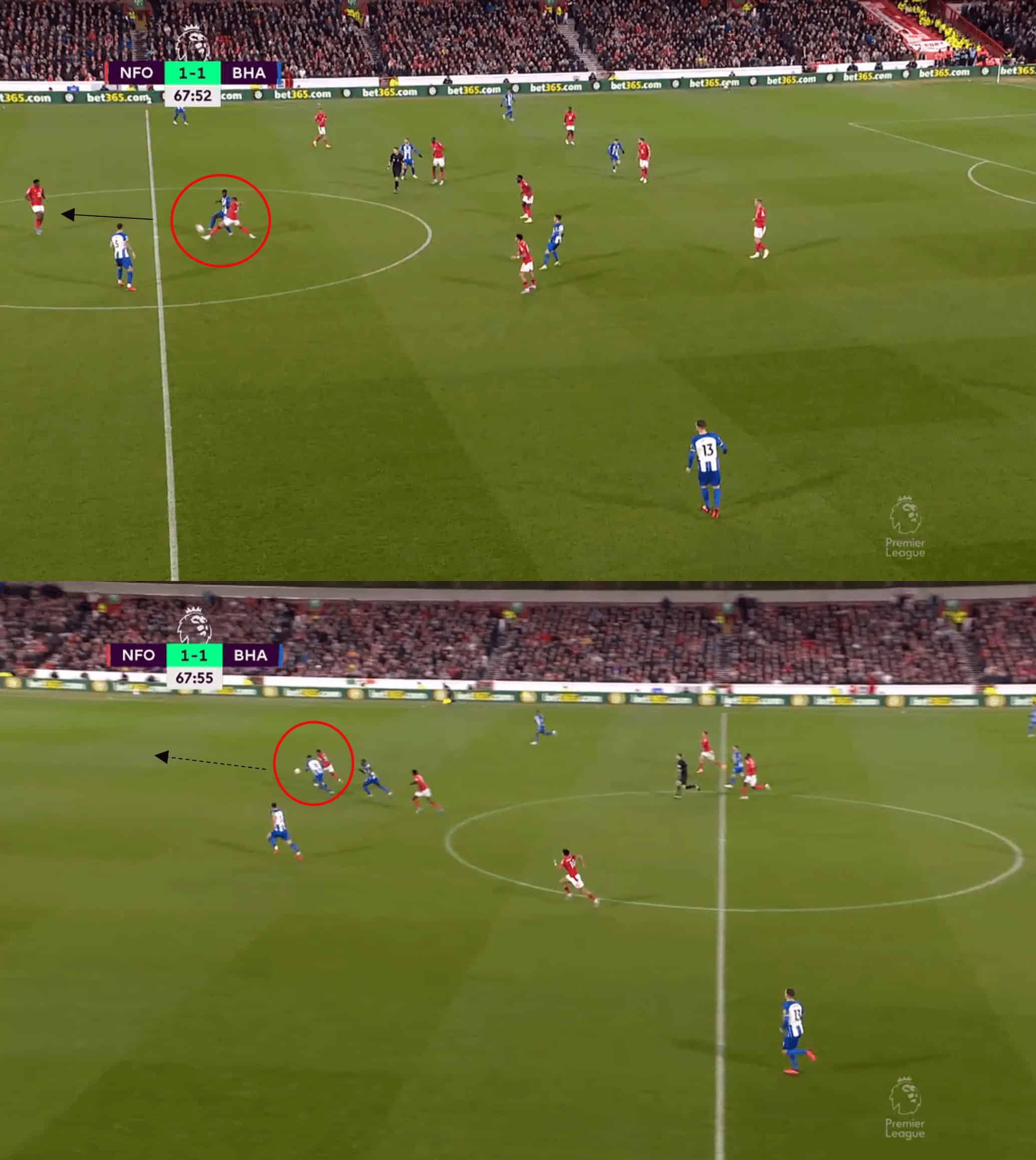
An example is above, where Danilo regains possession and following a quick passing exchange with Taiwo Awoniyi, the Reds are able to take the lead.
The graphics show the willingness to adapt to circumstances and highlights that Cooper is not one-dimensional. The Welshman further fits the bill because of his previous employment at the youth level in England; he started his coaching career at the Wrexham academy.
There had been rumours that Cooper had attracted the interest of Crystal Palace. Still, considering the recent appointment of Oliver Glasner at Selhurst Park, there is every possibility that Cooper will be open to an offer from the Sunderland hierarchy.
Conclusion
In this analysis, we have highlighted Sunderland’s strong defensive capabilities and room for improvement in the forward line. We have further identified the philosophy of the club going forward, wanting to play an exciting brand of football with young players.
This analysis has focused on three managers who have the potential to fill the vacant position at the Stadium of Light based on past performance, tactical style and previous work with younger players. Whether Sunderland opts for a rookie to the Championship or someone with experience, only time will tell.
Wearside is certainly in need of some stability and the next managerial appointment will be vital in driving Sunderland into a new era.






Comments